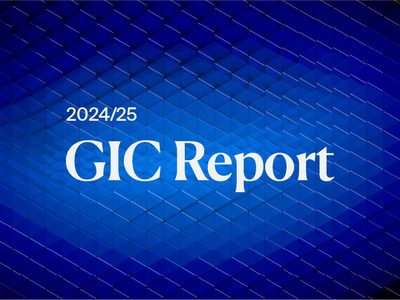This article adapts remarks delivered by GIC CEO Lim Chow Kiat at GIC Insights LIVE 2020, a virtual convening of thought leaders around the world to discuss the future of sustainability, healthcare and technology. GIC Insights is our annual flagship event that gathers a select group of prominent business leaders to deliberate over long-term issues pertinent to the international business and investment community.
With all the big changes going on in the world, we need to re-imagine the future. We need to do so by identifying the key forces at work, deduce their implications and formulate our plans.
Last year, I highlighted three of those forces: rising inequality, disappearing interest rates and technology disruption. They are still very much in play. This year, let me add three more to that list.
First – large policy interventions
With the COVID-19 emergency, policymakers have doubled down on government interventions. These actions are necessary to avert an immediate economic collapse. They have boosted financial markets, benefitting all investors.
But they are not by themselves a long-term solution. Most emergency spending and lending have gone towards relieving short-term pressures. They are a liquidity bridge. Solvency remains an issue.
The resulting low interest rates, debt piles and heavy financial market reliance on policy support could lead to large distortions of economic decisions, macro instability and market fragility.
We expect the economic environment to be volatile and challenging, but for long-term investors like GIC, we are prepared for new risks and hopeful of new investment opportunities, and welcome new collaboration opportunities.
Second – great dispersion of outcomes
There are a great many divisive trends at work, in economics, politics, technology and geopolitics, which are likely to be with us for many years. This will require us to adapt and adjust to the resulting wide dispersion of outcomes, by:
- Looking carefully at the range of dimensions differentiating winners and losers. This applies whether it is a company, sector, country or asset class. In GIC, we believe size, technology capability and domicile will matter a great deal.
- Understanding history more carefully; being more circumspect about extrapolations and mean reversion. As an example, bond yields cannot repeat their historical declines.
- Looking under market aggregates and indices more thoroughly, as important risks and opportunities may be hidden in them. For example, in the area of emerging market equities, the doubling of China’s weight just within the last five years has surely impacted the overall risk-return characteristics of the asset class.
To these ends, we will continue to collaborate with our partners and leverage our collective capabilities, especially in going deeper and at earlier stages, into various market segments, to seek opportunities.
Third – sustainability
Sustainability is firmly at the forefront. This represents an opportunity for all of us to both do good and do well.
As a large and long-term investor, GIC’s fortunes are tied to the larger investment universe. We are concerned about sustaining it for future value creation. In other words, we care about growing the pie and taking care of the goose.
Sustainability is hence critical and forms an essential part of GIC’s investment strategy, risk management and corporate culture.
It is important to note that this issue goes beyond climate change. As highlighted by the COVID-19 crisis, there are other gaps and opportunities. For example, social inequality issues around access to technology, healthcare, jobs, and social safety nets. Let me share a few examples of what GIC is doing in this space:
- First, in the investment area, we are seeking more sustainability-related opportunities. This includes renewable energy assets, “green” buildings, and emerging technologies that support the low-carbon transition. We already have an impact investing effort, done both internally and externally. But what we really hope to see, in the long run, is that all our investments are impact investments, meaning they are profitable both commercially and socially. In that regard, our effort is not limited to new assets, but existing ones too, through thorough engagement in transition efforts.
- In terms of industry participation, we are a supporter of TCFD (Task Force on Climate-related Financial Disclosures) and are working with World Economic Forum’s International Business Council (IBC) to help harmonise the many reporting metrics. Getting to a common set of reporting standards will be a big step in the ESG (Environmental, Social and Governance) effort.
- In our own organization, we are learning and improving our own ESG practices, including committing to zero-emissions, supporting efforts to build communities, and fostering diversity and inclusion. An example is our “With Love, GIC” initiative which has enabled us to support many ground-up community projects by our own staff around the world.
Sustainability is a global existential issue that no single party can solve. We need to work collectively to find solutions.
Conclusion
In summary, as we re-imagine the future, we need to identify various changes. In fact, we need to embrace these changes and adapt our approach accordingly.
But one thing that does not change, with or without a pandemic, is our continued commitment to connect our partners, exchange views, and learn from one another.






